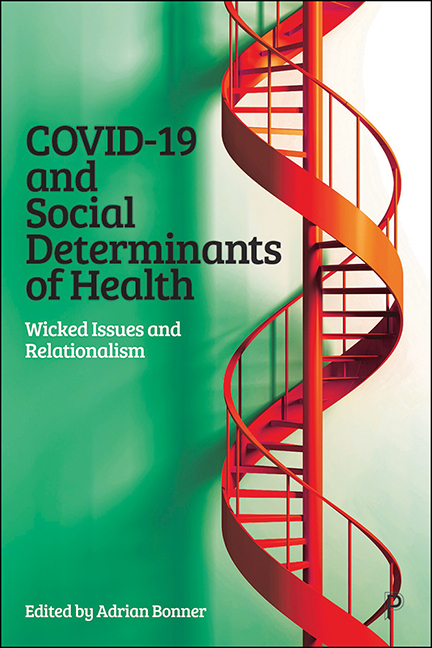Book contents
- Frontmatter
- Miscellaneous Frontmatter
- Contents
- List of figures and tables
- Notes on contributors
- Foreword
- Introduction
- Part I Wicked issues and relationalism
- Part II Regionalism and geopolitical environments
- Part III Public sector, COVID-19 and culture change
- Part IV The third sector
- Part V The case for relationalism
- Part VI Engagement and proposed changes
- Conclusion
- Appendix The Centre for Partnering
- Index
7.4 - Case study: COVID-19 and governing for health and wellbeing in New Zealand – putting communities at the centre
Published online by Cambridge University Press: 18 January 2024
- Frontmatter
- Miscellaneous Frontmatter
- Contents
- List of figures and tables
- Notes on contributors
- Foreword
- Introduction
- Part I Wicked issues and relationalism
- Part II Regionalism and geopolitical environments
- Part III Public sector, COVID-19 and culture change
- Part IV The third sector
- Part V The case for relationalism
- Part VI Engagement and proposed changes
- Conclusion
- Appendix The Centre for Partnering
- Index
Summary
Introduction
We have learned tough lessons from the COVID-19 pandemic about trust in government and that when our systems are disrupted, many communities are immediately vulnerable to hardship (Henrickson, 2020). With the government poised to make significant changes to the health system there is an opportunity in New Zealand (NZ) to revisit our social infrastructure and put communities at the centre of decision-making. An important part of this infrastructure is the untapped potential of local government and local iwi (Māori tribes) to strengthen the ability for communities to act on their own needs. Understanding the history, legislative context and current challenges and opportunities for local governance, provides direction for how community and public health action could be more impactful and sustainable.
For decades, public health has had community health and empowerment at its theoretical core. The 1986 Ottawa Charter for Health Promotion is a widely used framework for action to improve health (World Health Organization, 1986). Two central elements are a greater focus on community action on health and to reorient health services towards patients and communities. This built on the 1978 Alma Ata declaration on primary healthcare which also called for communities to be central actors within the health system (World Health Organization, 1978).
In 2008 the World Health Organization convened a Commission on the Social Determinants of Health which found, while the health system itself is one determinant, most of health and illness results from interactions with, and within, the places in which we are born, live, work, play and age (Commission on the Social Determinants of Health, 2008). And this is no different in NZ. We have a rising burden of non-communicable diseases (NCDs; heart diseases, cancers, mental health disorders) which are linked to shared risk factors found in our surrounding social and physical environments (Ministry of Health, 2013). NCDs are also the biggest drivers of health inequality, but as COVID-19 has shown, infectious diseases will also follow patterns of existing inequality if given the opportunity to spread.
For 50 years we have known in NZ of significant health inequities by ethnic group – in particular Māori and Pacific people (Blakely et al, 2005).
- Type
- Chapter
- Information
- COVID-19 and Social Determinants of HealthWicked Issues and Relationalism, pp. 143 - 150Publisher: Bristol University PressPrint publication year: 2023

